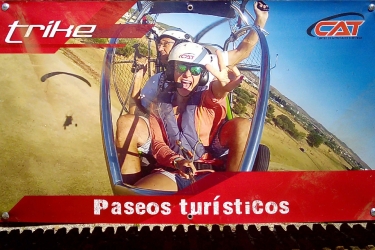Paramotor.Centro de actividades turísticas

Centro de actividades turísticas. CAT
We are in Paseo Fluvial Pepe Duarte.
Teléfono +34 617 490 500
Correo

We are in Paseo Fluvial Pepe Duarte.
Teléfono +34 617 490 500
Correo
Andalusia is one of the world references for everything that surrounds the horse world.
In Bornos you will find a wide range of places to enjoy these magnificent animals.
SEE THE ROUTES HERE aquí
You can go horseback riding along its trails and make excursions of various lengths enjoying the wonderful views of the Sierra and the Reservoir.
Also, if you want to get to know the horse world well and admire magnificent specimens, in Bornos there are usually some meetings for equestrian fans and some pilgrimage in which fans from various parts of the region participate. Begin to know and live the exciting world of the horse
According to Padre Mariscal, “the Hermitage of Calvario was built, largely with their alms and solicitude, by some devotees of this town with the surname Soto; In the years 1696, a hermit, who was called Brother Mendoza, a native of Córdoba, was collected in the hostel that is attached.
This one, with the alms he requested from the neighbors, added another room to the chapel, in a square and as a better half (...)
The monastery of San Jerónimo helped him a lot, with sustenance for himself and a lot of material for the work. The last illness gave him when his attempt was reaching perfection.
According to the Bornense historian Manuel Barra, despite this statement by Father Mariscal, the truth is that those who constantly took care of the needs of Brother Mendoza were the Franciscans of the Convent of San Bernardino de Siena.
So much so, that they made a Via Crucis (imitating the one that D. Fadrique Enríquez de Ribera had instituted from the Jerónimos Monastery), starting from the door of his Convent to the Calvario Hermitage and which is very frequented on Fridays, especially those of Lent. Some crosses and chapels that indicated the stations of the Via Sacra are still preserved.
The triangular façade stands out in its construction, which offers a beautiful niche, topped with a typically Baroque belfry.
In the hermitage, a beautiful image of San Francisco de Paula is venerated, dating from the first half of the 18th century. Other images of merit that are currently in said hermitage are: Santa Rosa de Viterbo (16th century); Saint John the Evangelist; an image of the Virgin, under the invocation of María Santísima de la Soledad; and others of less merit.
It also houses paintings of great interest, El Descendimiento(16th century) from the Italian school and which presided over the Chapel of the Colegio de la Sangre.